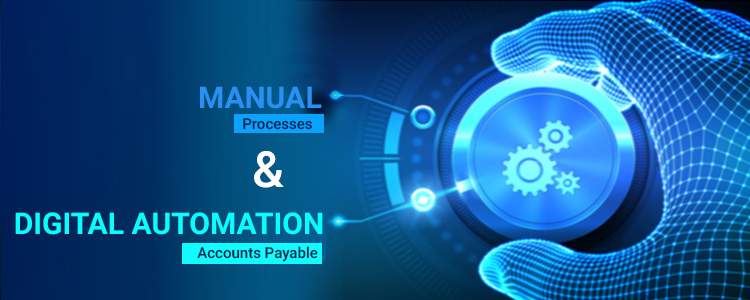How The Change from Manual Paper Based Processes to Digital Automation Increases Efficiency
By Admin on 18 April 2021

But what does all of this mean? In essence, with AP automation, a business increases its efficiency. With many companies where manual paper-based processes rule the roost, digital automation could change how they do business fundamentally. But how does the shift from manual systems to full digital automation for accounts payable makes a difference?
When we look at paper-based accounts payable systems, it’s evident that not anyone could get the gist of what’s going on. In fact, clerks may need to be trained for months just to understand the intricacies of the system. This type of process isn’t ideal for a business. Instead, companies should be looking at a more straightforward way of handling their accounts payable department.
With digital automation, there’s less training needed. Most of the data is already entered into the system. Processing takes place without the need for anyone to be present. There’s no need to log into multiple banking systems, and automation reduces the cost of paper and mailing for checks.
When a business delivers an invoice for payment, it needs to deal with lag times between payment and when the money actually hits its account. Digital AP automation can help make that process move much faster. When a business integrates payment systems with its ERP platform, it can get real-time payment reconciliation. With this automated process, there’s no need to key in entries or decode bank data manually.
One of the most significant drawbacks of paper-based systems is the reliance on human input methods. With a human doing input for a system, there’s always the looming problem of errors showing up in their data entry. Digital process automation removes that manual entry issue and thereby prevents the creation and propagation of human error. Additionally, fixing those errors may require staff spending hours poring over entries to find where the problem is.
At the heart of the efficiency that AP automation generates is its ability to give a company back its time to use on other more demanding tasks. Accounts payable departments typically spend more time working on the processing of transactions than anything else. With electronic payments tied into the system, they have to spend less time dealing with the background tasks. The result is a far more organized and efficient AP department that can deal with material functions instead of rote entry and printing checks.
With the level of visibility that digital automation offers to suppliers, there’s less need for suppliers to spend time asking about payments. Electronic payments integrated into the AP department ensure they have full knowledge of payment status. There are fewer emails and phone calls to verify particulars and that helps the business be more efficient with its resource usage. It can cost a business per supplier query that they engage, so fewer questions mean less money wasted and more efficient use of the business’s resources.
With electronic payment integration, the business has more control over the timing of its payments to suppliers. Since many suppliers offer early payment discounts, there’s an incentive to ensure that the company meets its financial obligations before they come due. Typically, if a business taps into these discounts, it could save even more money in the long run, making usage more efficient.
The benefits that digital AP automation offers to businesses can be quantified inefficiency of time and resources. However, its adoption means more than that to enterprises. It sets the stage for a company to move into the digital age and start doing business in a completely paperless fashion. With the world moving towards a wholly digital environment, companies need to adapt to the changing world. Digital AP automation is the first step towards capitalizing on these benefits. Is your business ready to experience AP automation? Contact Arista today for expert consultancy for realizing your AP automation goals.